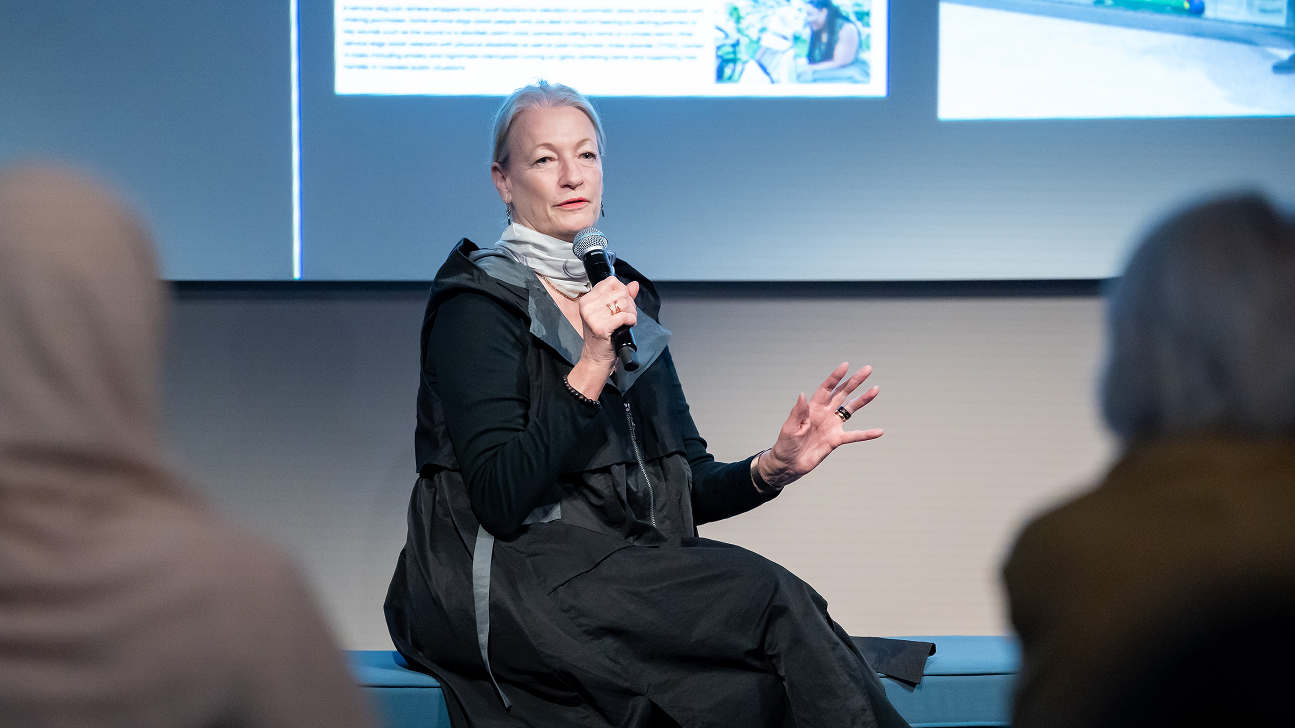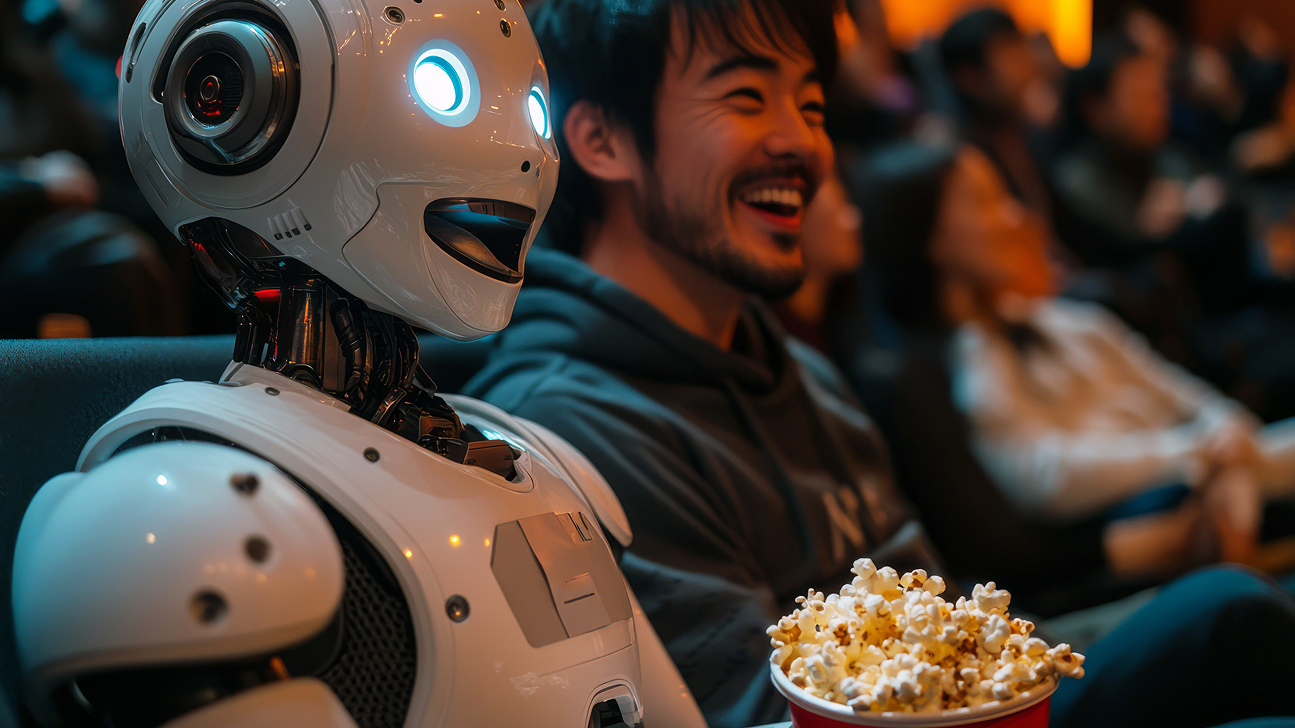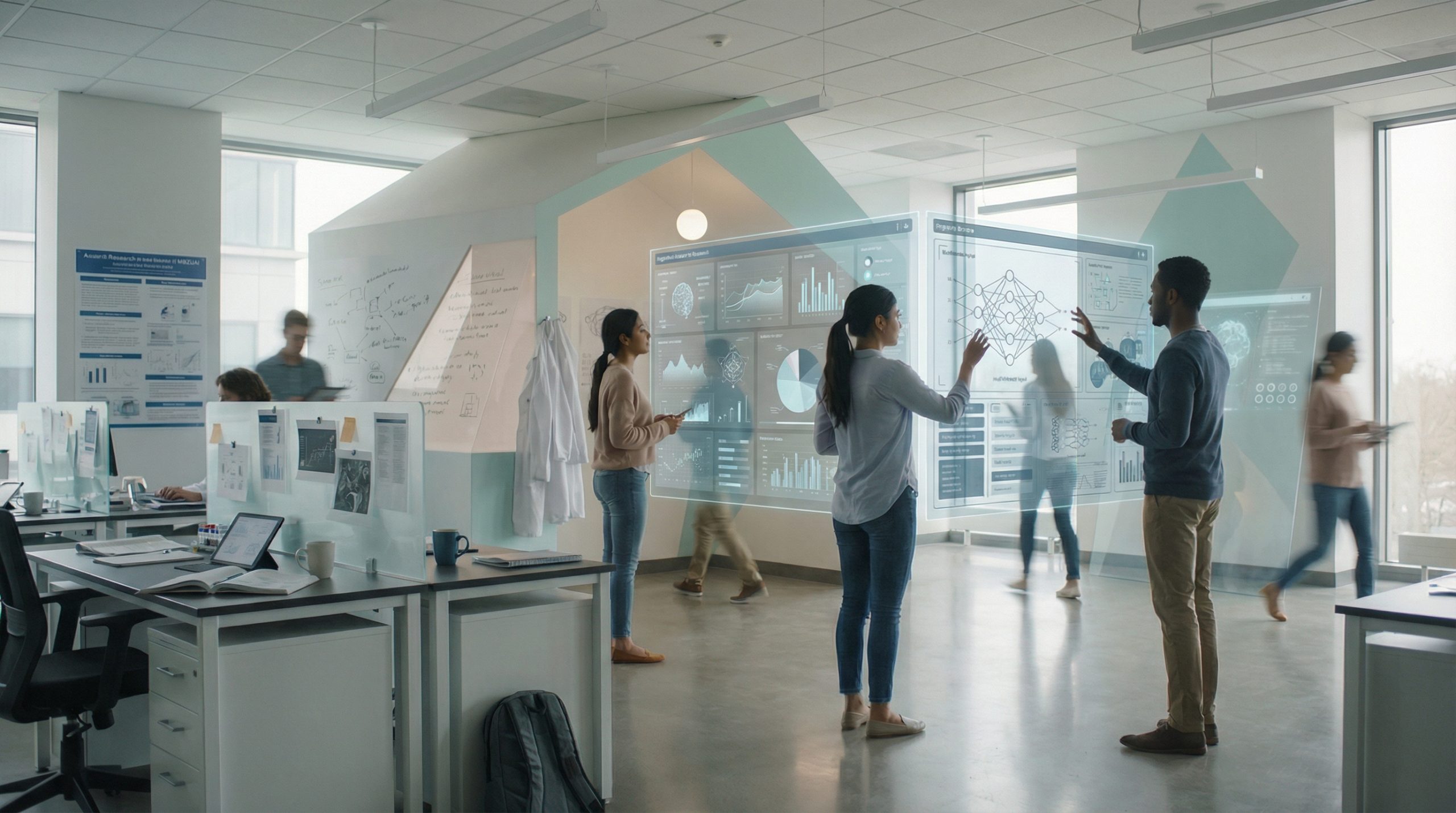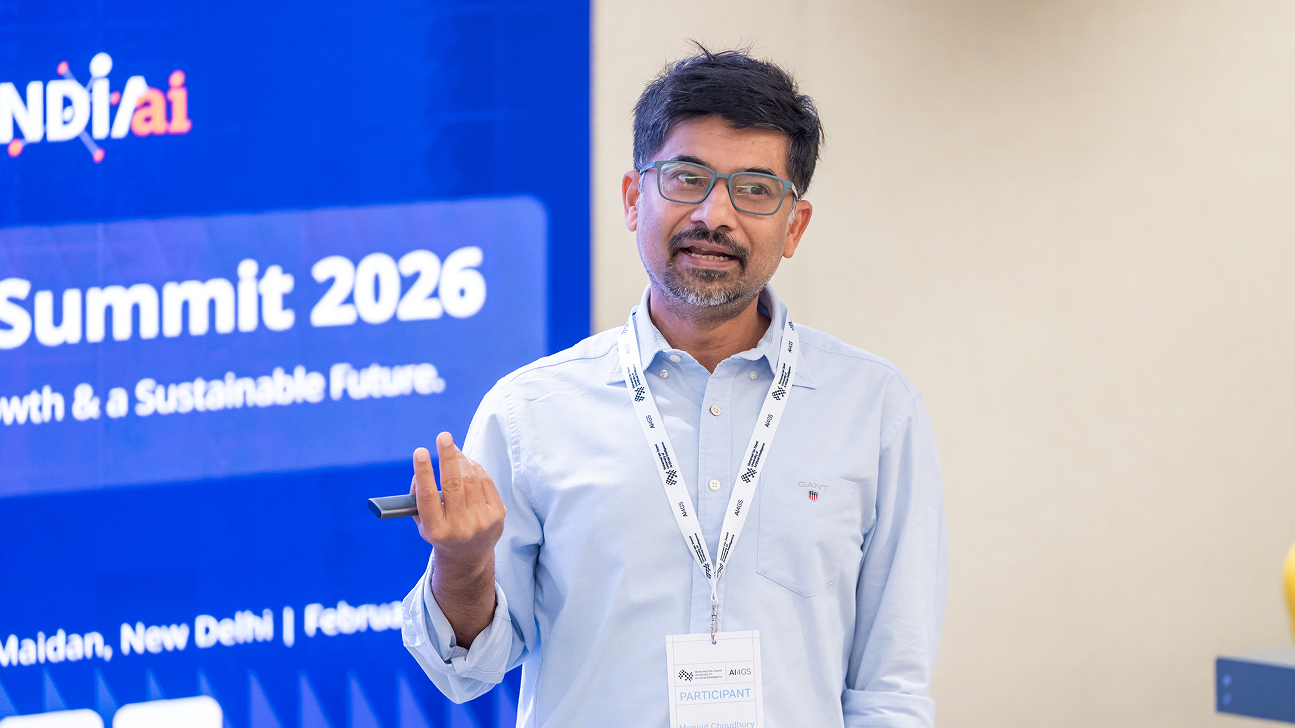Blurring the lines between the physical and digital
Monday, June 16, 2025

As the relationship between the physical and digital worlds evolves, so do their roles as interfaces for how we experience and interact with the world.
Our modes of expression and communication are increasingly being translated into virtual, digital forms – an emerging area of exploration that was at the centre of a panel hosted at Gallery S, Manarat Al Saadiyat , featuring Elizabeth Churchill, Department Chair and Professor of Human-Computer Interaction (HCI) at MBZUAI.
Part of the LAYERED MEDIUM: WE ARE IN OPEN CIRCUITS exhibition, the panel – entitled Body as medium: InterFACES: Skin/Screen – was moderated by independent writer, researcher and editor, Saira Ansari. Artist and writer Dana Dawud was also on the panel, and together the trio discussed how today’s hyper-connectivity and digital amplification is altering how we conceptualize the physical human body and its limits, and how we are redefining human-human, human-technology, and human-human mediated interaction.
“Our discussion explored the relationship between physical body and digital representation and presence,” says Churchill. “Throughout history, technology has revolutionised the way we communicate with each other and how we represent ourselves; today is no different. We are on the cusp of an even more profound shift as we navigate our way through the era of AI and what developments in AI mean for us as human beings.”
With the technology to create new extensions of our ‘selves’ more sophisticated and accessible than ever before – from animated avatars and AI generated interactive representations, to digital puppets who can purportedly act on our behalf while we are absent – it is natural to revisit some fundamental existential questions, adds Churchill.
“Who am I? What is my identity in any particular context? How do I express myself and my ‘selves’ within a context and across different contexts? How do I communicate what I want to say in different contexts and in different formats? These kinds of questions lay at the heart of these discussions, with an even deeper underlying question: how do we resist what is not in our best interests as individuals and as society?”

As chair of MBZUAI’s HCI department, Churchill is expertly placed to discuss these questions and more about the intersection of the digital and physical worlds.
The field of human-computer interaction studies how people interact with computers and other digital technologies. It not only focuses on the design of systems, interfaces, and technologies to make them effective, intuitive, and enjoyable for people to use, but also considers social, ethical, physical, and psychological perspectives and impacts. This approach necessitates an exploration of the porosity between physical and virtual spaces, which Churchill says is becoming more pronounced.
“Social media platforms, for example, allow us to create images of ourselves in forms like avatars. Whether just visual representations or more complex interactive versions of ourselves, we create and curate these digital representations of ourselves. These virtual ‘bodies’ and online presences become extensions of our physical identities, questioning the idea that we are physical only – our minds live beyond our bodies through all the ways we can express our ‘selves’.”
Using external platforms as an interface for expression is a long-standing human practice, adds Churchill, who states that AI is the latest evolution of this custom.
“From cave paintings to the printing press to the internet, we have been extending our minds, our thoughts, and our bodies and blurring what it means to be embodied,” she says.
“In recent years, virtual reality and augmented reality technologies have increasingly blended the physical and virtual — for example, tracked movements in motion capture become actions within virtual environments, and our ‘digital twin’ can act as we do. There is also the ‘datafication’ of the body. Wearable technologies collect data about our physical bodies and behaviours and then translate our biological existence and experience into digital information. This can then build digital representations of us as individuals, or an aggregate of people like us.”
Pointing to performance artists such as Stelarc, who has been exploring themes of technology and the human body since the late 1960s, Churchill says the blurring of the physical and digital has been a long-running area of artistic interest – and one that is becoming increasingly interesting.
“Stelarc explored how sensors embedded in our bodies affect what we do and how we relate to ourselves as embodied beings,” she says. “Those ideas are being extended more and more – inviting us to ask with more urgency ‘what does it mean to have a physical-computational-digital hybrid body?’
“Just a few examples of contemporary work are experiments with digital tattoos, evolutions in brain computer interaction, and explorations in ‘Neuro-HCI’ an area within HCI that focuses on the integration of neuroscience and brain technologies to enhance human-computer interaction. The blurring is ever increasing.
“This is all going to increase as we use AI to model us, shape us, and engage with our own re-shaping.”
- Human–computer interaction ,
- HCI ,
- art ,
- panel ,
- identity ,
- expression ,
- digital ,
- physical ,
- communication ,
Related
AI and the silver screen: how cinema has imagined intelligent machines
Movies have given audiences countless visions of how artificial intelligence might affect our lives. Here are some.....
- cinema ,
- art ,
- fiction ,
- science fiction ,
- artificial intelligence ,
- AI ,
MBZUAI Opens Applications for First Ph.D. Cohort in Human-Computer Interaction
Mohamed bin Zayed University of Artificial Intelligence (MBZUAI) has opened applications for its first Ph.D. cohort in.....
Read MoreBalancing the future of AI: MBZUAI hosts AI for the Global South workshop
AI4GS brings together diverse voices from across continents to define the challenges that will guide inclusive AI.....
- representation ,
- equitable ,
- global south ,
- AI4GS ,
- event ,
- workshop ,
- inclusion ,
- accessibility ,
- large language models ,
- llms ,
- languages ,


